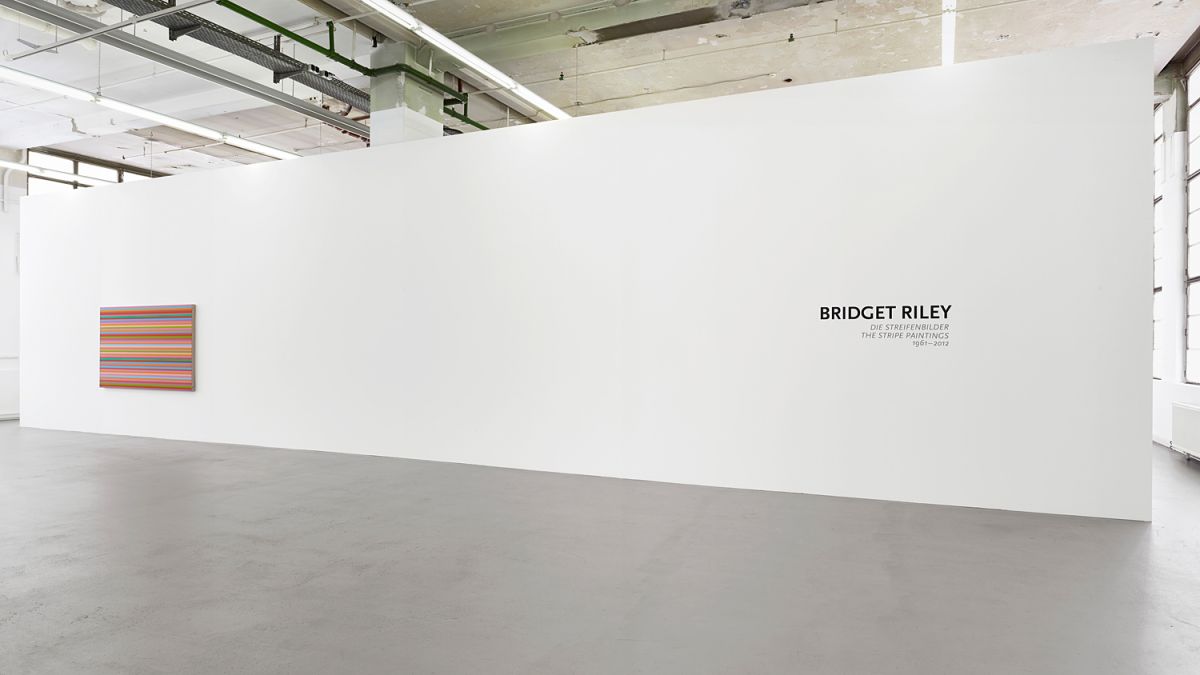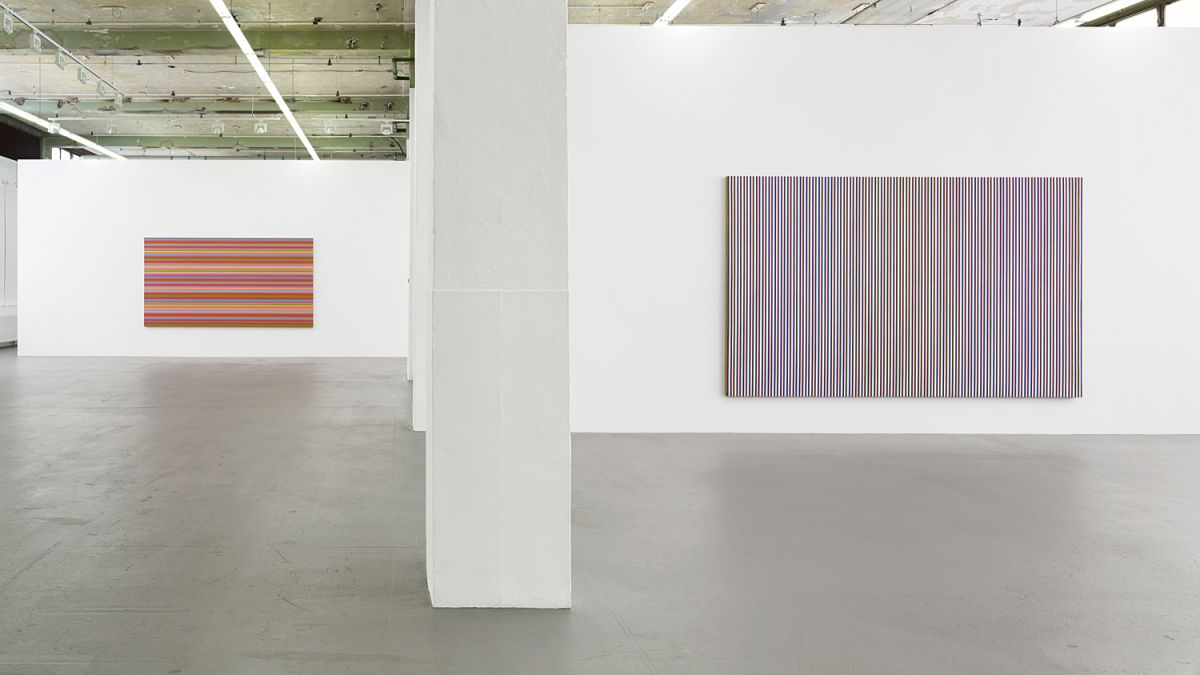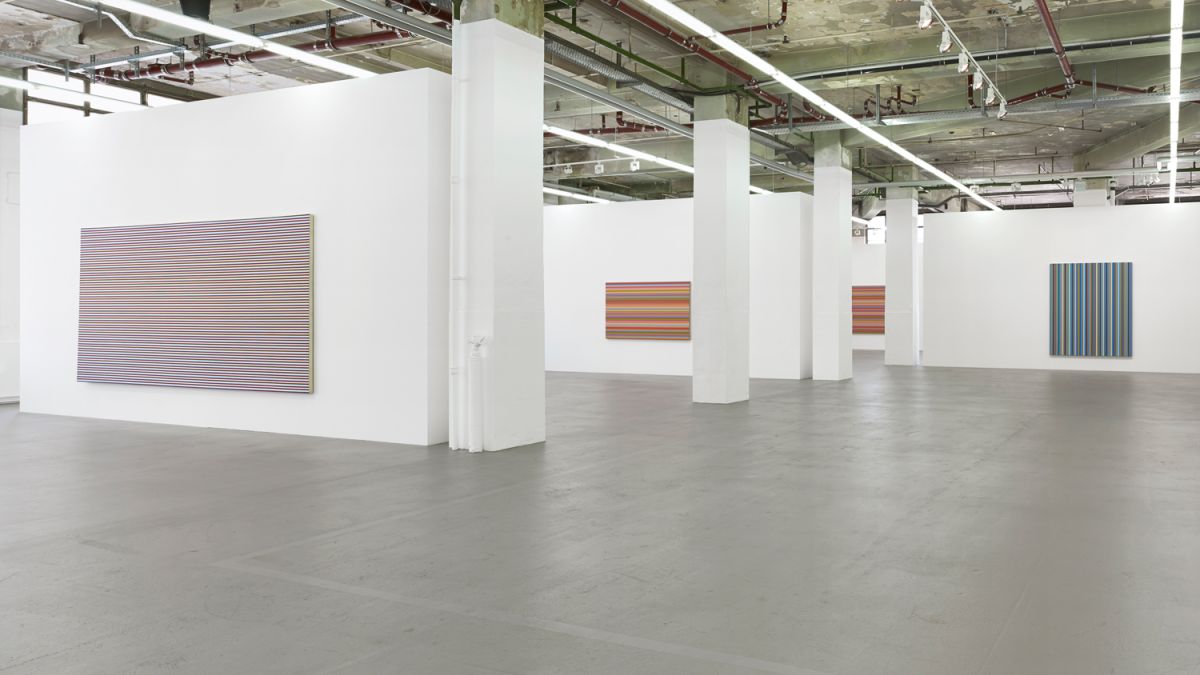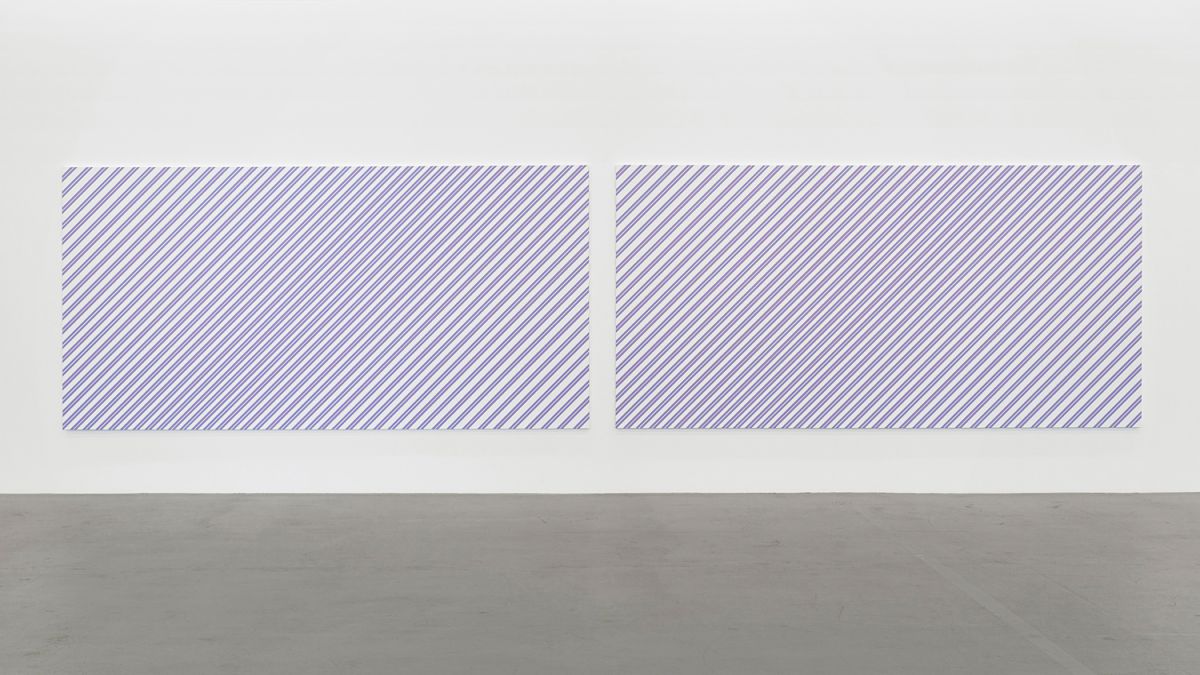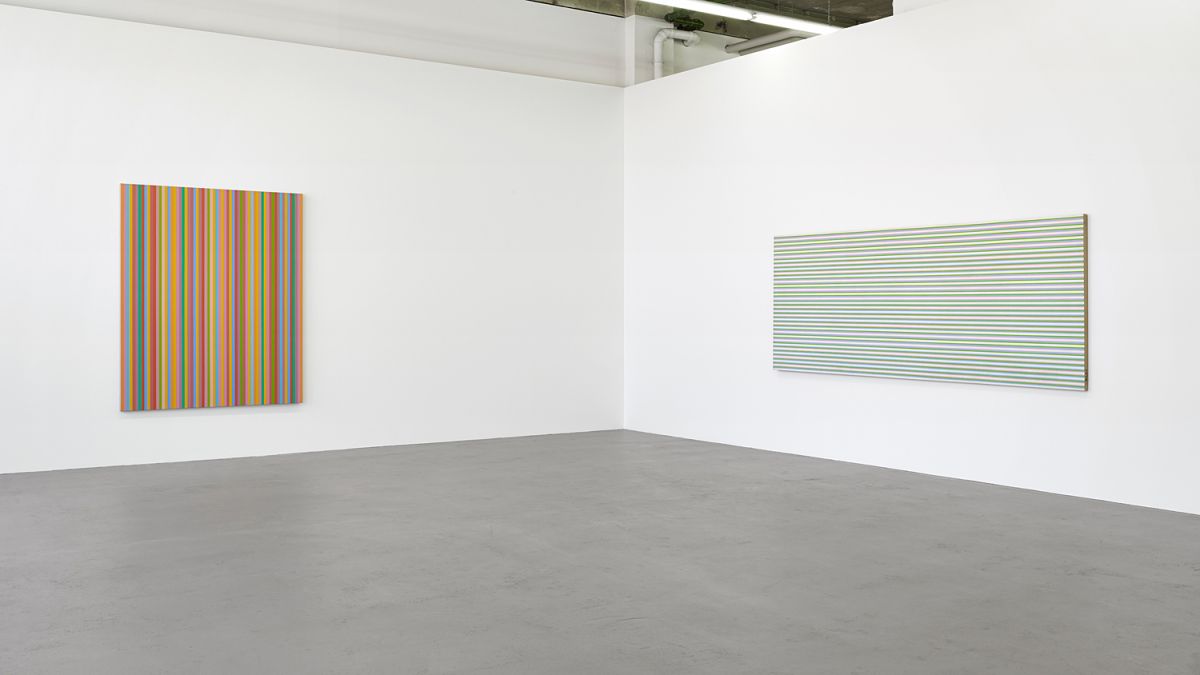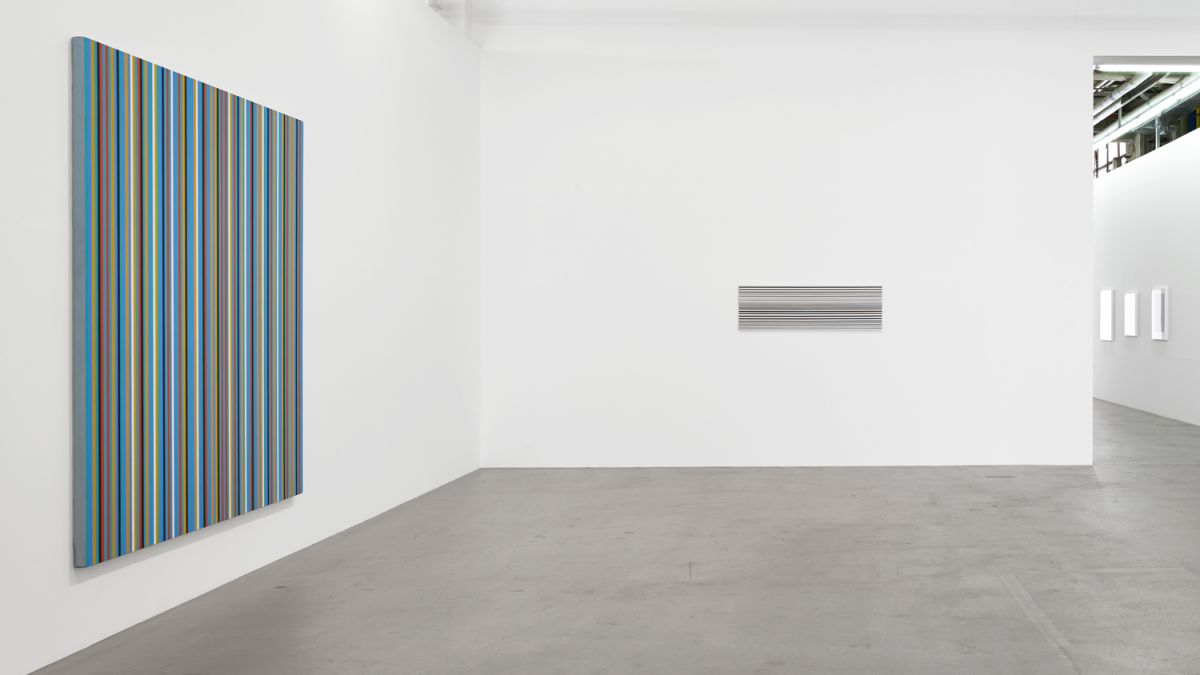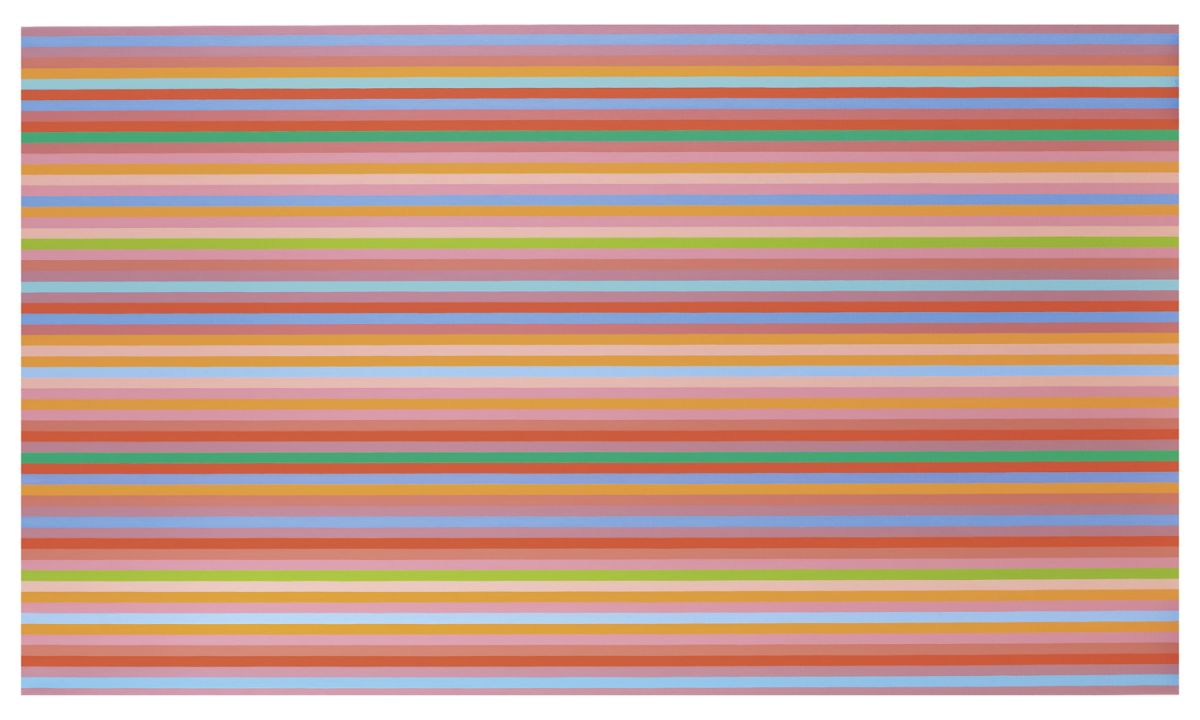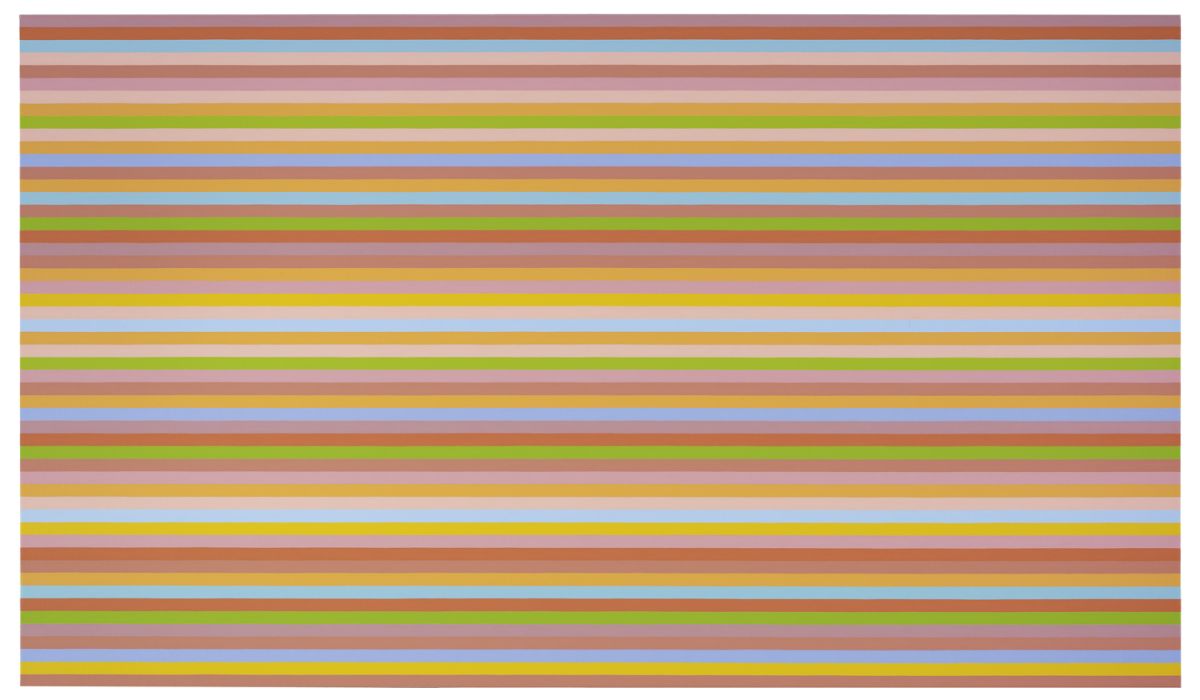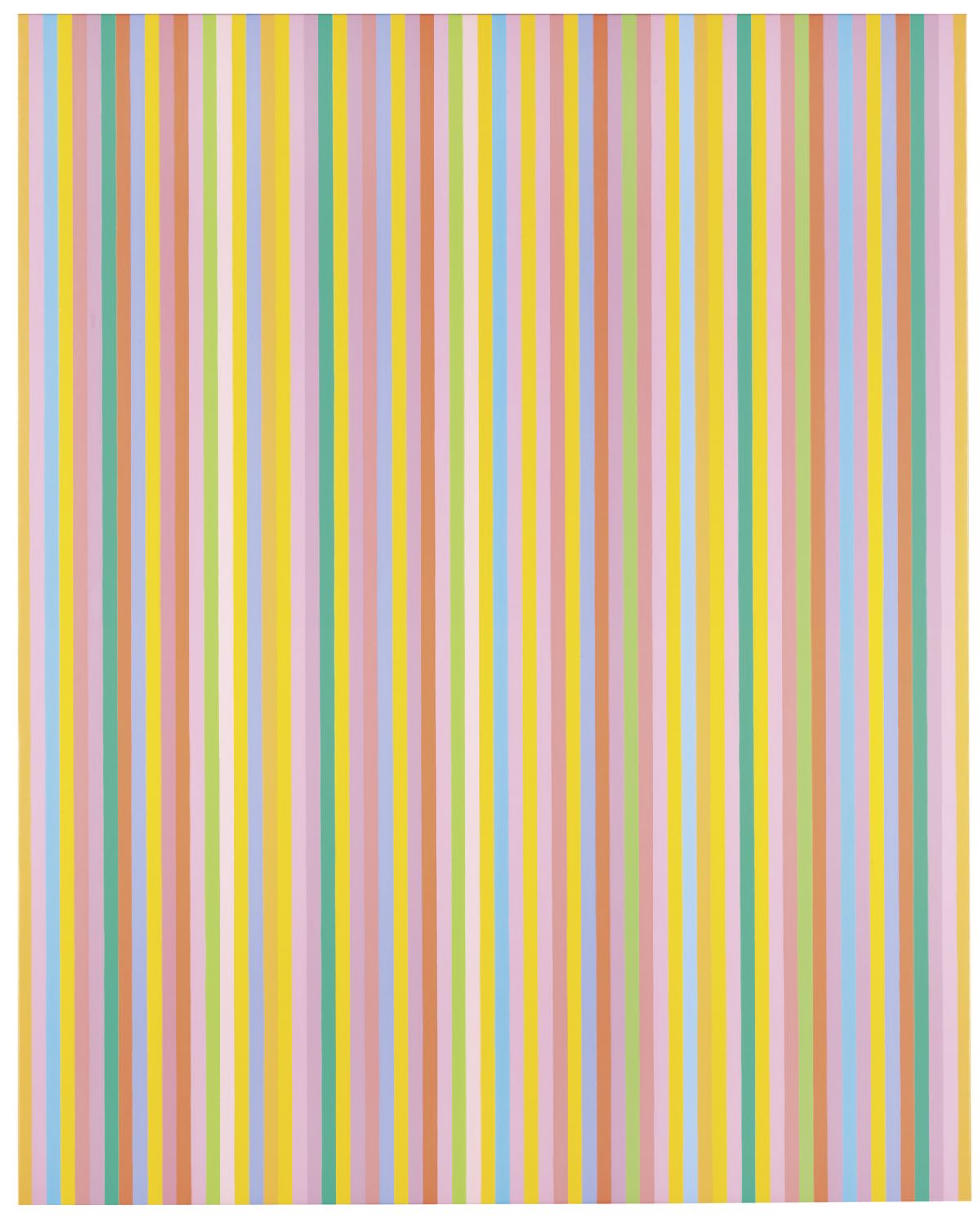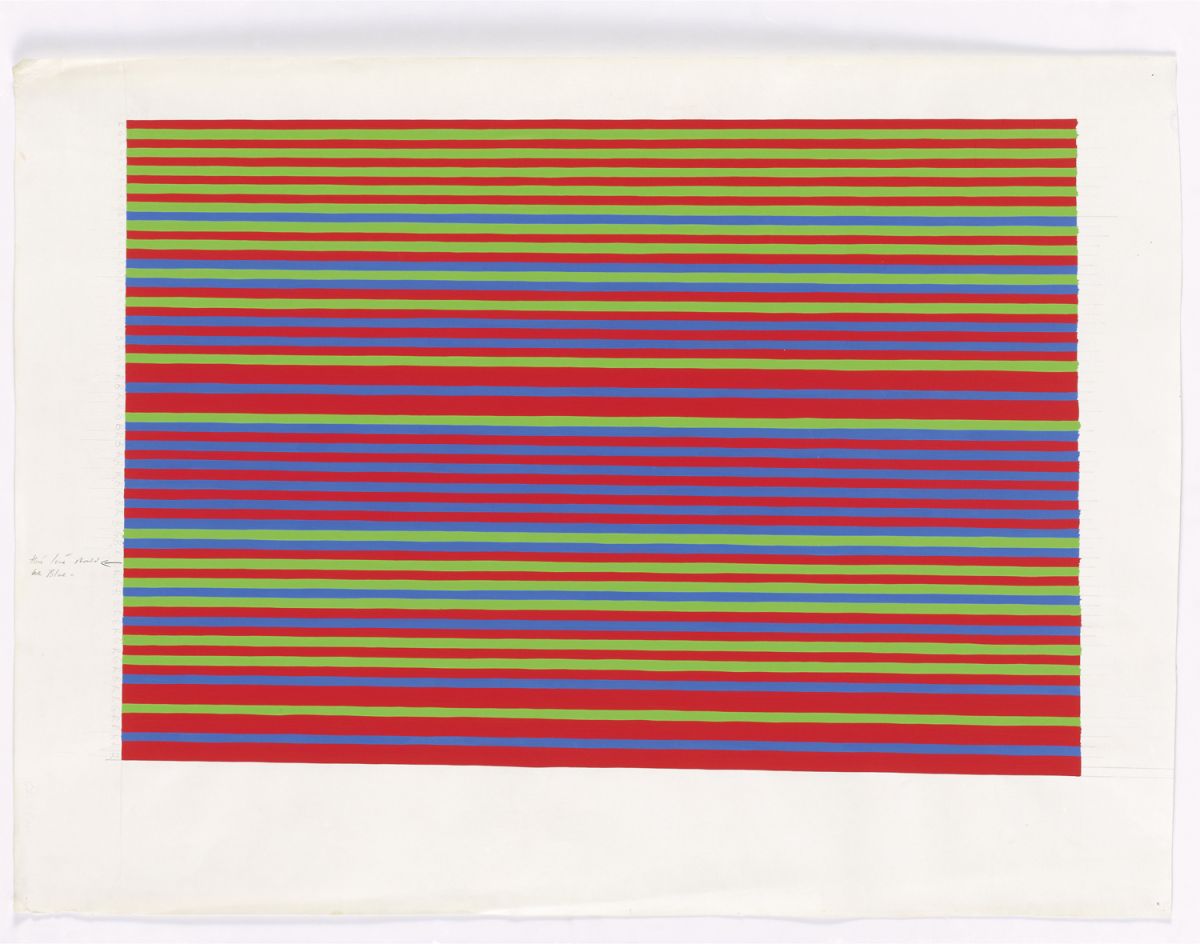Opening: June 8, 6-8 pm
Galerie Max Hetzler is pleased to announce the exhibition Die Streifenbilder / The Stripe Paintings 1961-2012, featuring 15 paintings and seven works on paper by British artist Bridget Riley.
Riley focusses on relations between form and colour with regard to the vivid and impressive phenomena of perception, to which she is inspired by nature. In this context, an active viewing, a 'craft of seeing' is crucial, a fact at which Riley hints in her theoretical writings, recently published under the title The Eye's mind by Thames & Hudson, and Ridinghouse, London.
In her investigation of perception beyond representative depiction, Riley was primarily stimulated by Seurat and Cézanne; but also by rhythm and pace in the works of Mantegna and by Raphael's use of lines, forms, space and colour. The artist's wide-ranging exploratory process is rendered visible in her studies, which are gouache and pencil on paper or graph paper that precede the creation of the paintings. Riley expresses a continuous dialogue with her own work. Abstract forms, such as the stripe motive, are regularly revisited.
The earliest stripe painting in the exhibition, Horizontal Vibration (1961), is a black and white composition that plays on the movement generated by the varying width of forms in the centre.
In the late 1960s Riley started to work with colour. Visual instability arises due to gradually appearing sensations of colour. While the eye moves from one nuance to the next, an apparent merging and flickering of colours, as well as new colour effects occur. In Late Morning (1967), the stripes are still vertical. Being aligned horizontally in the subsequent version, Late Morning (Horizontal) (1969) leads to their optically lateral extension beyond the picture surface. Furthermore, in Persephone 1 (1969) and in the diagonal stripe painting Prairie (1971/2003), a complementary contrast unfolds in the immediate environment of the paintings.
During the 1980s, Riley broadened her colour repertoire to the so-called Egyptian palette, derived from ancient Egyptian art, which the artist encountered during a journey to Egypt in the winter of 1979/80. Here, the colour sequences do not comply with logical regularities anymore, as it can be seen in Après Midi (1981) and Bali (1983). The formal principles rather target to give rise to feelings and, in their dynamics, refer to the ambivalent and always altering character of nature.
Since 2009 the stripe paintings feature a warmer and brighter palette, while their structure is further loosened. Thereby, as it becomes evident in the still vertical stripe painting Lux (2011), the impression of a colour surface of fleeting sensation is strengthened. Starting with Rose Red, followed by Burnished Rose, Rose Gold, Rose Shadow, Rose Rise and Red Overture (all 2012), Rileys most recent works feature solely horizontal stripes. The dense rhythm of the alternating colour clusters and their dissolution creates unexpected visual impressions, not least reminiscences of landscape painting.
Die Streifenbilder / The Stripe Paintings 1961-2012 is Bridget Riley's fourth solo exhibition at Galerie Max Hetzler
In 2012 Bridget Riley (*1931, London) has been awarded the Rubens Prize of the City of Siegen and the Sikkens Prize of the Sikkens Foundation, Amsterdam as well as the Goslar Award for Modern Art in 2009 and the Praemium Imperiale of the Japan Art Association in 2003. Her works are represented in the collections of major international museums including: Museum of Modern Art (MoMA), New York; Tate Gallery, London; Musée d’Art Moderne de la Ville de Paris; National Museum of Modern Art, Tokyo; Centre Pompidou, Paris; Museum für Gegenwartskunst, Siegen and Staatsgalerie Stuttgart.
She has exhibited widely in both solo and group exhibitions, including National Gallery, London (2010); Musée d’Art Moderne de la Ville de Paris (2008); Schirn Kunsthalle, Frankfurt/M. (2007); ZKM – Museum für Neue Kunst, Karlsruhe (2006); Museum of Contemporary Art, Sydney (2005); Aargauer Kunsthaus, Aarau (2005); San Diego Museum of Art (2004); Tate Britain , London (2003); Dia Center for the Arts, New York (2000); Serpentine Gallery, London (1999); Venice Biennale (1986); National Museum of Modern Art, Tokyo (1980); Kunstverein Hannover (1970); documenta VI (1977) and documenta IV, Kassel (1968).
An illustrated catalogue, distributed by Holzwarth Publications, Berlin and Ridinghouse London, with texts by John Elderfield, Paul Moorhouse and a chronology by Robert Kudielka will accompany the exhibition.
Upcoming exhibitions:
Albert Oehlen, Interieurs
Bleibtreustraße 45, Berlin-Charlottenburg
September 7 – October 19, 2013
Bauernmalerei
curated by Albert Oehlen,
Goethestraße 2-3, Berlin-Charlottenburg
September 7 – October 19, 2013
André Butzer
Oudenarder Straße 16-20, Berlin-Wedding
September 6 – October 12, 2013
Please note:
Thomas Struth
Stiftung zur Förderung zeitgenössischer Kunst in Weidingen, Gartenstraße 12, Weidingen/Eifel
July 20 – August 24, 2013

